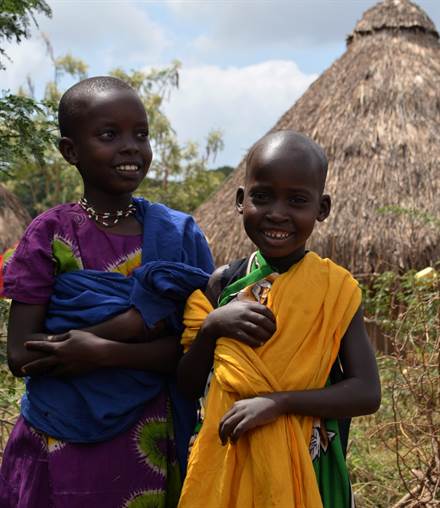
Linking upstream and downstream communities in Kenya
-
Rivers and lakes
As demand for water grows in river basins, downstream users often suffer. This is especially true when those users depend on rivers and natural wetlands, which many still regard as “wasted” water. That is the case on the river Ewaso Ngiro in Kenya, which drains from the glaciers of Mount Kenya through the heavily populated agricultural region of Laikipia in central Kenya, to the Lorian Swamp in the arid northeast.
 The 2300 square kilometre Lorian Swamp is an oasis for people and their animals in the dry season. Pastoralists depend on it and the river’s floodplain for grazing. The river used to flow all year round, but in recent years it has faltered. Once permanent, it has become a seasonal river. Water now fails to reach the swamp for 100 days in a typical year. This threatens both pastoralists and the wildlife of the swamp, including birds and a large crocodile population.
The 2300 square kilometre Lorian Swamp is an oasis for people and their animals in the dry season. Pastoralists depend on it and the river’s floodplain for grazing. The river used to flow all year round, but in recent years it has faltered. Once permanent, it has become a seasonal river. Water now fails to reach the swamp for 100 days in a typical year. This threatens both pastoralists and the wildlife of the swamp, including birds and a large crocodile population.
The river faces several threats: abstraction for irrigated agriculture, including intensive horticulture in Laikipia, increased pressure from tourist lodges and deforestation along its course, which reduces the basin’s ability to store water. So, despite drying up much more than in the past, it also suffers occasional intense flash floods. Climate change may also play a role in the changing hydrology. A further potential threat is the planned construction of a new 100 million US water supply dam on the river at Crocodile Jaws near Oldonyiro.
Wetlands International, the Kenya Red Cross and Cordaid’s local partners are helping communities adapt against the changing river flows and its impact on the floodplain and the Lorian Swamp. Conventional community risk reduction does not address the ecosystem threat from upstream.
So Wetlands International and its partners have encouraged 50 downstream communities to organise themselves in the Waso River Users Empowerment Platform. The network has empowered them to link up with stakeholders further upstream, both to rethink the river’s development and use, and to share information about river flows and early warning about floods coming downstream. In both 2013 and 2014 the platform grabbed national attention when they organised Camel Caravans with local water users from the Samburu, Turkana, Gabra and Borana pastoral communities. Caravans travelled both upstream and downstream, and met in the middle of the river Ewaso Ngiro.
This galvanised the attention of communities and attracted national media coverage that put pressure on the government, local authorities and private sector. A subsequent conference with all the stakeholders resulted in commitments to support local organisations in order to protect and restore the river and reduce abstractions.
